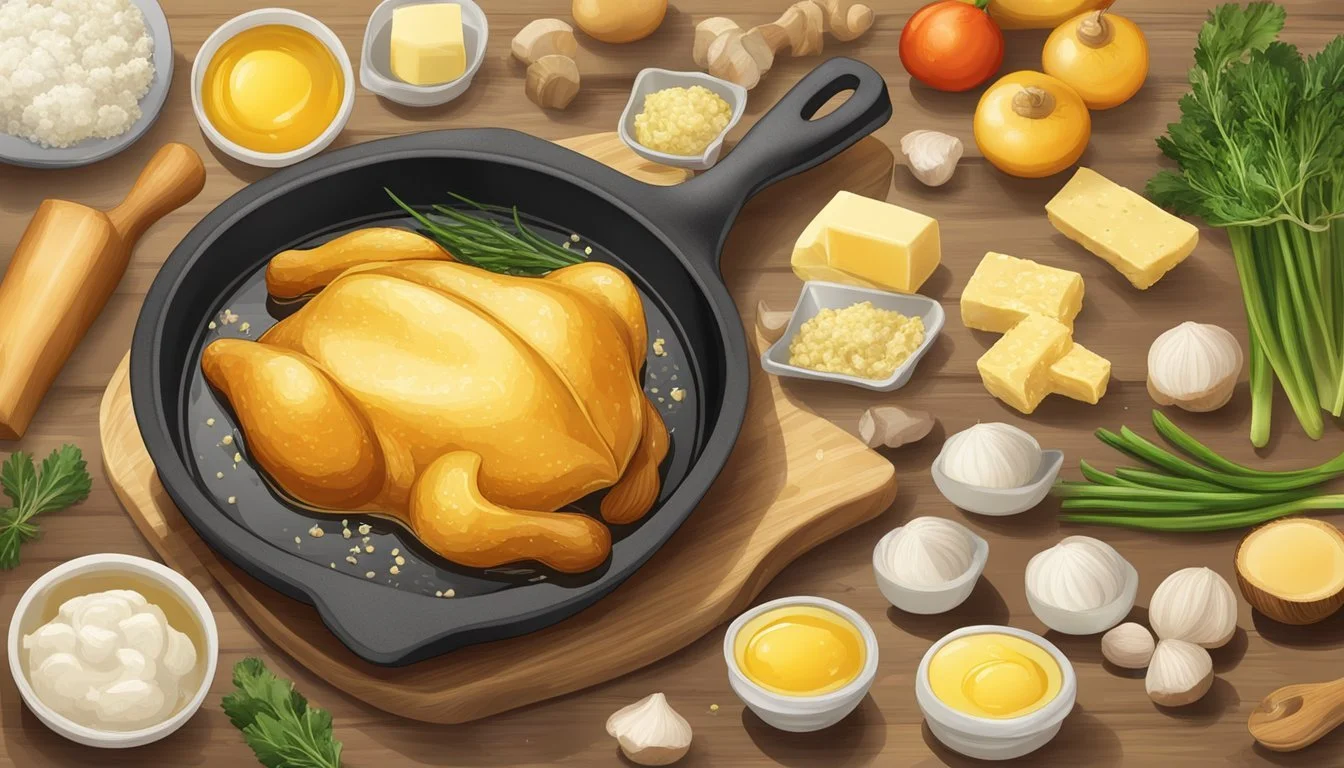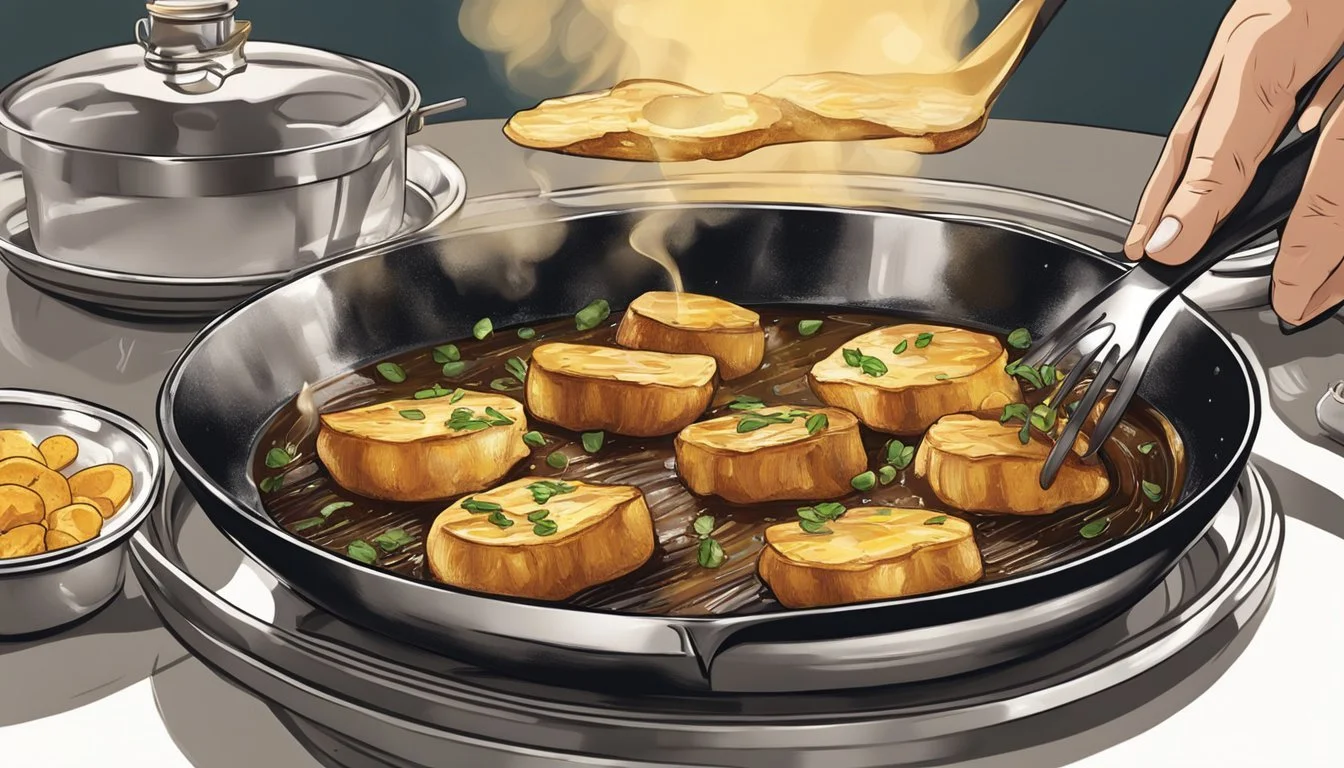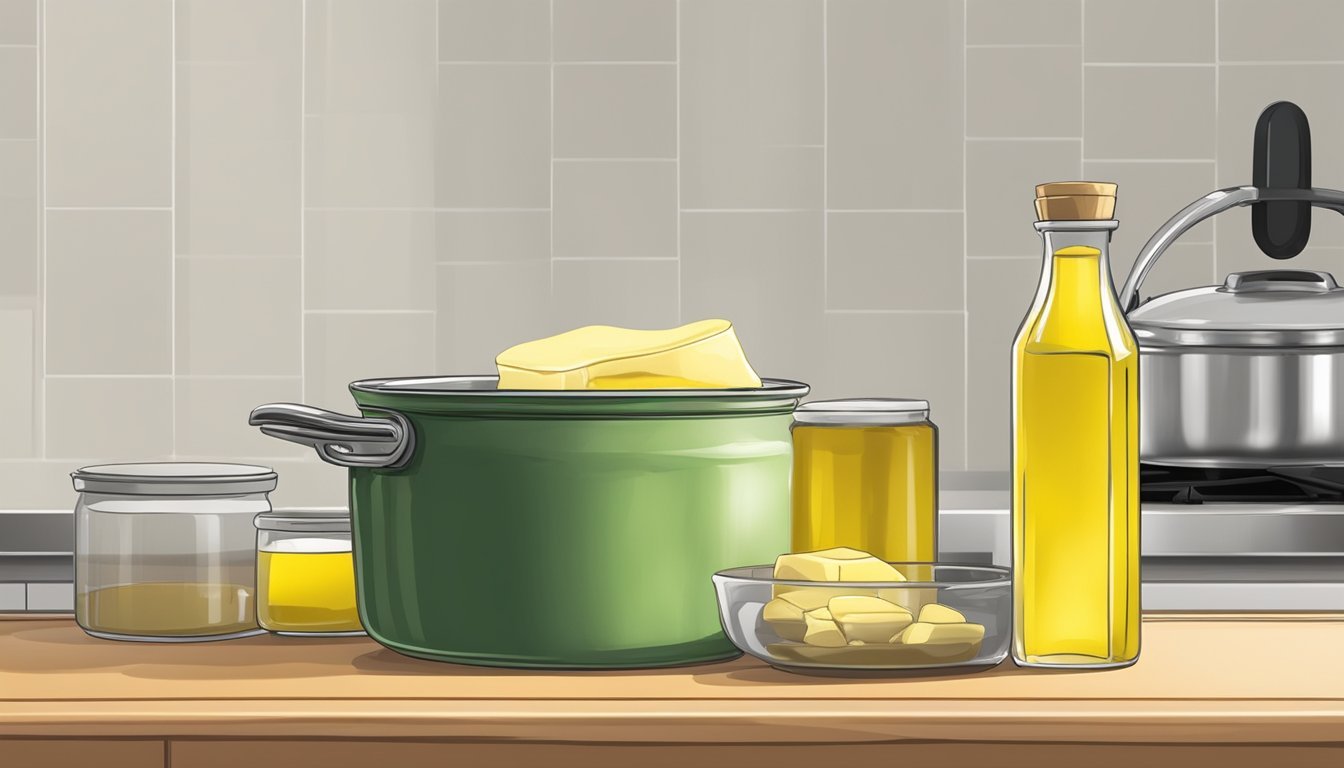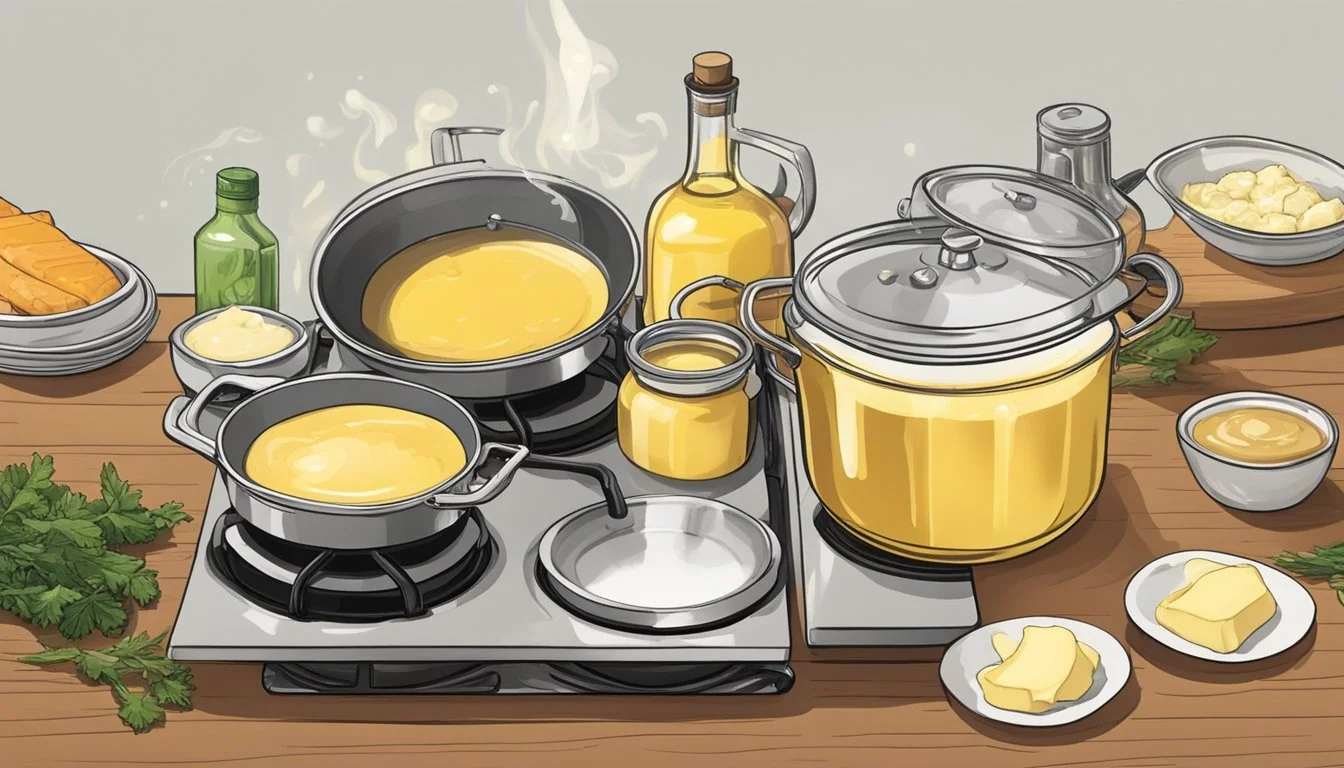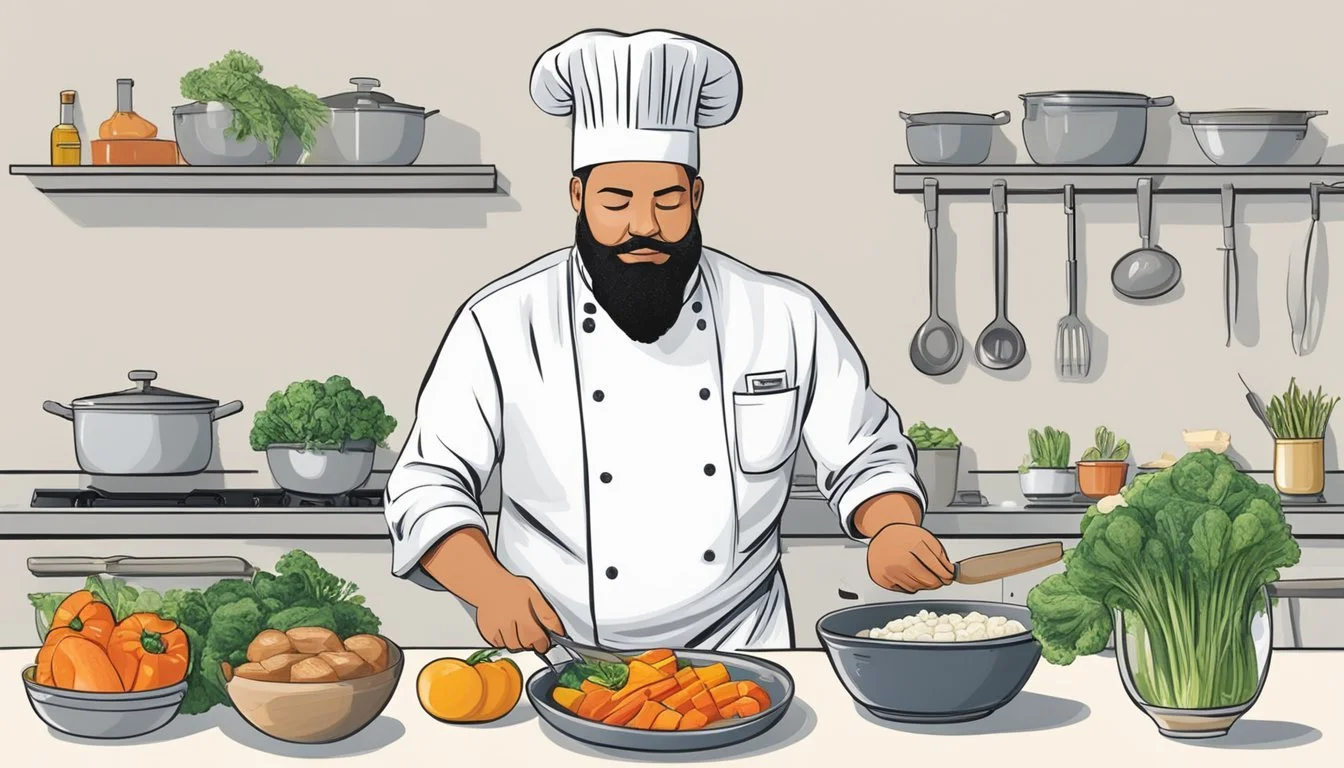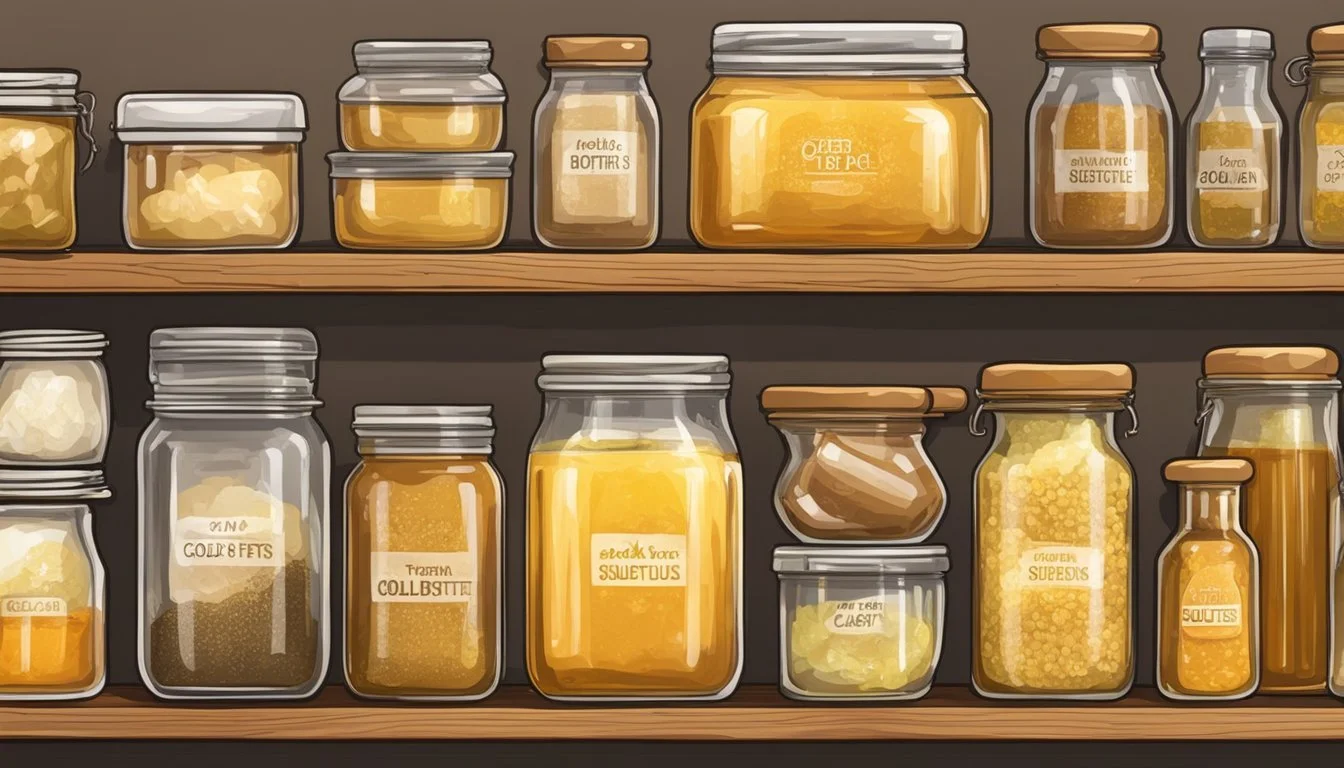Duck Fat Substitutes
Best Alternatives for Cooking
Cooking with duck fat can elevate the flavor of many dishes, but it can be challenging to find or may not fit everyone's dietary preferences. Whether you’re a home chef or simply looking for healthier or more accessible alternatives, knowing the best substitutes for duck fat is invaluable. Some of the top alternatives include lard, tallow, ghee, and peanut oil, each providing unique benefits and varying smoke points.
Lard, a type of rendered pork fat, is among the most effective substitutes due to its similar texture and versatility in various cooking methods. Tallow, derived from beef fat, offers a neutral taste and a high smoke point, making it suitable for high-heat cooking tasks. Ghee, or clarified butter, not only has a higher burning point than regular butter but also imparts a rich flavor to dishes.
Vegetarians and those seeking plant-based options can turn to peanut oil, which has a distinct flavor and multiple uses ranging from sautéing to baking. By understanding these alternatives, you can seamlessly replicate the culinary benefits of duck fat, ensuring your dishes remain flavorful and texturally satisfying.
Understanding Duck Fat
Duck fat is a culinary ingredient known for its unique flavor and versatile use in cooking.
One of the main advantages of duck fat is its high smoke point, making it ideal for roasting, frying, and sautéing.
Composition
Duck fat contains a mix of saturated fats, monounsaturated, and polyunsaturated fatty acids. This balance helps in achieving a desirable texture in dishes.
Fat Type Amount (%) Saturated Fats ~33% Monounsaturated Fats ~49% Polyunsaturated Fats ~13%
Additionally, it's a source of vitamin E and omega-3 fatty acids.
Health Aspects
While duck fat contains cholesterol, its profile of fatty acids, particularly the monounsaturated fats, can contribute positively to heart health.
Moreover, omega-3 fatty acids are known for their potential benefits in reducing the risk of heart disease.
Usage
Duck fat is commonly used in:
Duck confit
Roasting vegetables
Frying potatoes
Its rich, savory flavor enhances both simple and gourmet dishes.
Popular Duck Fat Applications
Duck fat is a versatile ingredient that enhances the flavor and texture of various dishes. Its uses range from roasting meats and vegetables to making rich pastries and traditional confit.
Roasting with Duck Fat
Duck fat elevates the roasting process by giving a unique, rich flavor to meats and vegetables. When used in roasting, it imparts a crisp exterior and tender interior.
To achieve perfectly roasted potatoes, coat them with duck fat before baking. This results in a golden, crunchy crust while maintaining a fluffy center. Poultry, particularly chicken and turkey, benefits immensely from a duck fat rub, enhancing both flavor and texture.
Duck fat also pairs well with roasted root vegetables such as carrots and parsnips, adding depth to their natural sweetness.
Frying and Sautéing
Using duck fat for frying and sautéing creates a delightful taste profile in dishes. The high smoke point of duck fat ensures it is suitable for these high-heat cooking methods without burning.
Duck fat enhances the flavor of sautéed vegetables, giving them a savory, rich taste. It is particularly effective with greens like spinach and kale, adding a luxurious sheen.
For frying, try using duck fat for french fries. The result is a distinctively crispy outside with a tender, flavorful inside that you can’t achieve with regular oil.
Baking
In baking, duck fat can be used as a butter or shortening substitute to create flaky, flavorful pastries. Its unique properties make it suitable for both sweet and savory baked goods.
Duck fat renders pie crusts exceptionally crisp and light. When used in biscuits or scones, it results in tender, buttery layers.
Additionally, combining duck fat with herbs and spices can enhance the crusts on savory tarts and quiches, making them not only visually appealing but also deliciously rich.
Confit Preparation
Duck confit is a traditional French technique where duck legs are slow-cooked in their own fat. This method preserves the meat while infusing it with deep, robust flavors.
To prepare duck confit, submerge duck legs in seasoned duck fat and cook at a low temperature for several hours. The meat will become incredibly tender and flavorful.
Once prepared, duck confit can be crisped in a hot pan or oven, making the skin irresistibly crispy. This dish pairs well with roasted potatoes or a fresh green salad to balance its richness.
Healthier Alternatives
When seeking healthier substitutes for duck fat, focusing on sources of monounsaturated and polyunsaturated fats can be beneficial. These fats can improve cholesterol levels when used in moderation and provide a variety of plant-based options.
Monounsaturated Fat Sources
Monounsaturated fats are known to help lower bad cholesterol levels and are generally healthier. Olive oil is a common substitute for duck fat in many dishes because it contains high levels of monounsaturated fats. It is suitable for roasting and frying.
Avocado oil is another excellent choice. It has a high smoke point, making it versatile for cooking methods that require high temperatures. Avocado oil is also plant-based and contains beneficial nutrients.
Canola oil is often recommended for those looking to reduce their calorie and saturated fat intake. It has a neutral flavor and is a good option for both baking and frying.
Polyunsaturated Fat Sources
Polyunsaturated fats include omega-3 and omega-6 fatty acids, which are important for heart health. Sunflower oil is a popular choice for those aiming to use healthier fat substitutes. It is light in flavor and useful for both roasting and baking.
Flaxseed oil can be used as a replacement in low-heat cooking or salad dressings. It is rich in omega-3 fatty acids, making it a great choice for maintaining heart health.
Walnut oil offers a unique flavor profile, making it suitable for salad dressings or low-heat cooking. It adds a rich, nutty taste while providing essential fatty acids.
Choosing these fats in moderation can contribute to a healthier diet and help manage cholesterol levels more effectively.
Duck Fat Substitutes for Cooking
When duck fat is not available, various alternatives can be used to achieve similar results in cooking. These substitutes vary from other animal fats to vegetable-based oils and specialty oils, each bringing unique characteristics and advantages to dishes.
Animal Fat Substitutes
Lard: Lard is rendered pork fat and is highly prized in many kitchens. It has a similar texture and flavor profile to duck fat, making it a suitable option for frying, roasting, or baking. Additionally, lard has a high smoke point, which makes it excellent for high-heat cooking methods.
Tallow: Tallow, which is rendered beef fat, offers a neutral flavor that can complement a variety of dishes. It is hardy for high-heat applications like frying and roasting. Its solid form at room temperature makes it easy to measure and use in recipes where duck fat would typically be used.
Goose Fat: Goose fat is very similar to duck fat in both flavor and texture. It's particularly good for roasting vegetables, frying, and confits. Its rich, savory taste makes it an excellent substitute for duck fat, especially in traditional recipes that call for roasted or slow-cooked meats.
Chicken Fat: Chicken fat, also known as schmaltz, is another close alternative to duck fat. It works well for sautéing and can enhance the flavor profile of savory dishes such as soups, stews, and roasted potatoes. Its lower smoke point makes it less suitable for high-temperature cooking.
Vegetable-Based Substitutes
Olive Oil: Olive oil is a versatile and commonly used vegetable-based fat. It is perfect for low to medium-heat cooking, such as sautéing and baking. While it imparts a distinct flavor, it can enrich certain dishes. Extra virgin olive oil, in particular, is best reserved for dressings and low-heat applications due to its delicate nature.
Coconut Oil: Coconut oil offers a unique, slightly sweet flavor and works well for baking and sautéing. It is solid at room temperature but melts quickly when heated. This oil is also popular in vegan and dairy-free recipes due to its plant-based origin.
Vegetable Shortening: Vegetable shortening is a solid fat made from hydrogenated vegetable oils. It is excellent for baking due to its neutral taste and ability to create tender pastries and flaky crusts. However, it lacks the depth of flavor that animal fats provide.
Specialty Oil Substitutes
Ghee: Ghee, or clarified butter, has been widely used in Indian cuisine. Its high smoke point and rich, nutty flavor make it a superior alternative for frying, roasting, and even baking. Ghee’s preparation process which involves removing water and milk solids, also gives it a longer shelf life.
Sunflower Oil: Sunflower oil is a light, neutral oil that works well for frying and baking. Its high smoke point allows for various cooking methods without the risk of burning. This oil is readily available and often used as a healthier alternative to animal fats.
Canola Oil: Canola oil is known for its neutral taste and high smoke point, making it a good choice for frying, sautéing, and baking. It is low in saturated fats, which makes it a healthier option for those looking to reduce animal fat intake. Its versatility ensures seamless substitution in many recipes.
By exploring these substitutes, cooks can find the best duck fat alternative that matches their dietary preferences, cooking methods, and flavor needs.
Texture and Flavor Considerations
When choosing substitutes for duck fat, the texture and flavor are key considerations. Duck fat offers a rich, savory flavor that imparts depth and richness to dishes. Here's a look at some popular substitutes:
Butter: Provides a rich, creamy flavor with high fat content. Its moisture helps create a flaky texture in baked goods. Butter also has nutty undertones when browned.
Coconut Oil: This plant-based option has a distinct flavor that can mimic animal fats well. The texture it provides is smooth and slightly creamy when solid, and it offers a unique, tropical flavor.
Lard: Known for its similar rich and savory flavor to duck fat. It excels in baking, adding flakiness to pastries. The texture of lard when cold is firm but melts smoothly.
Goose Fat: Offers a comparable savory flavor with a rich mouthfeel. It's particularly suitable for roasting and frying, where its high smoke point is beneficial.
Understanding these substitutions allows cooks to maintain both the texture and depth of flavor that duck fat traditionally provides.
Cooking Techniques and Substitutions
Duck fat is prized for its rich flavor and versatility in various cooking techniques. When substituting duck fat, understanding the nuances in cooking methods, smoke points, and effective ratios is essential.
Substitution Ratios
When substituting duck fat in recipes, typically, a ratio of 1:1 can be used with other fats. For instance:
Chicken fat or schmaltz: Ideal for confit or slow cooking.
Lard or vegetable shortening: Commonly used in baking and roasting.
Ghee: A versatile option for sautéing, frying, and baking due to its high smoke point.
Using a 1:1 ratio helps maintain the balance and texture of the dish without compromising flavor.
Smoke Point and Cooking Methods
Smoke point determines how hot a fat can get before it starts to burn. Duck fat has a relatively high smoke point, making it excellent for high-heat cooking. Here’s a quick guide:
Ghee: High smoke point (~485°F), excellent for deep-frying and sautéing.
Lard: Moderately high smoke point (~370°F), suitable for roasting.
Butter: Lower smoke point (~350°F), best for baking and low-heat cooking.
Choosing a substitute aligned with the cooking method ensures that the dish maintains its intended flavor and texture without burning the fat.
Culinary Uses
Different fats shine in specific culinary applications. Duck fat’s rich and savory profile can be closely matched with:
Chicken fat (schmaltz): Perfect for confit, adding depth to slow-cooked dishes.
Goose fat: Great for roasting and frying due to a similar flavor and consistency.
Ghee: Useful in high-heat cooking like sautéing and frying, as well as baking.
Butter and vegetable shortening can be used in baking and dressings where a solid fat at room temperature is advantageous. The choice of substitute should enhance the dish while keeping the flavors authentic.
Nutritional Profile and Health Considerations
Duck fat is known for its rich content of monounsaturated and polyunsaturated fatty acids, which are healthier options compared to saturated fats found in many animal fats.
Nutritional Profile:
Calories: Duck fat is calorie-dense, contributing to energy intake.
Fats: High in monounsaturated fats like oleic acid, beneficial for heart health.
Vitamins: Contains small amounts of Vitamin E, which acts as an antioxidant.
Duck fat's nutritional composition can aid in managing cholesterol levels when consumed in moderation.
Health Considerations:
High-calorie content means it should be used sparingly to avoid weight gain.
Cholesterol: Though duck fat raises HDL (good) cholesterol, it may also increase LDL (bad) cholesterol, necessitating balanced consumption.
Heart Health: The presence of healthy fats can support heart function, but portion control is vital.
Incorporating duck fat into cooking can enhance flavor while also contributing to a balanced diet when used mindfully. Proper usage and moderation are key to harnessing its benefits without adverse effects on health.
Preservation and Storage
Duck fat, like other rendered fats, deserves careful storage to maintain its quality. When not in use, duck fat should be kept in a cool, dark place, away from direct sunlight. For longer-term storage, refrigeration is recommended.
Refrigerator Storage
Duck fat keeps well in the refrigerator for several months. Store it in an airtight container to prevent any possible contamination. This method ensures that the cooking fat retains its flavor and texture.
Freezer Storage
For even longer shelf life, duck fat can be stored in the freezer. Using a freezer-safe container or vacuum-sealed bag can extend its usability for up to a year. Ensure it's labeled with the date to track its age.
Comparing Shelf Life of Substitutes
Different substitutes for duck fat also have unique storage needs. Here's a quick guide:
Substitute Refrigerated Shelf Life Frozen Shelf Life Goose Fat Up to 6 months Up to a year Butter 1-2 months 6-9 months Lard Up to 3 months 1 year or more Olive Oil Best before exp. date Not recommended
Selecting the right substitute also means understanding its preservation requirements. Pay attention to expiration dates and proper storage methods to ensure the best culinary results.
Always use clean utensils to scoop out the fat to avoid any contamination and ensure longevity. While duck fat can add unparalleled richness to dishes, handling it with care ensures you get the most from this versatile ingredient.
Global Availability and Cost
Duck fat, while prized for its rich flavor, often presents challenges in terms of availability and cost on a global scale.
Availability:
Duck fat is typically found in specialty supermarkets, gourmet food stores, and online retailers.
In regions with a culinary tradition centered around duck, such as France, it is more readily available.
In contrast, in regions less focused on duck cuisine, it may be harder to find.
Cost:
Duck fat tends to be more expensive compared to other animal fats.
Prices can range from $1-$2 per ounce.
Chicken fat: Often more budget-friendly, costing between 10-50 cents per ounce.
Schmaltz: Another accessible alternative, also typically less costly.
Other Animal Fats:
Goose fat: Similar in flavor and quality to duck fat but similarly pricey and less commonly found.
Lard: Widely available and cost-effective.
Ghee (purified butter): Has a higher smoke point than butter and is a suitable substitute for various cooking methods.
Price Comparison Table:
Fat Type Average Cost (per ounce) Duck Fat $1-$2 Chicken Fat 10-50 cents Goose Fat Comparable to Duck Fat Lard Lower than Duck Fat Ghee Variable but accessible
These variables in availability and cost necessitate considering local alternatives and budget when choosing a substitute for duck fat.


